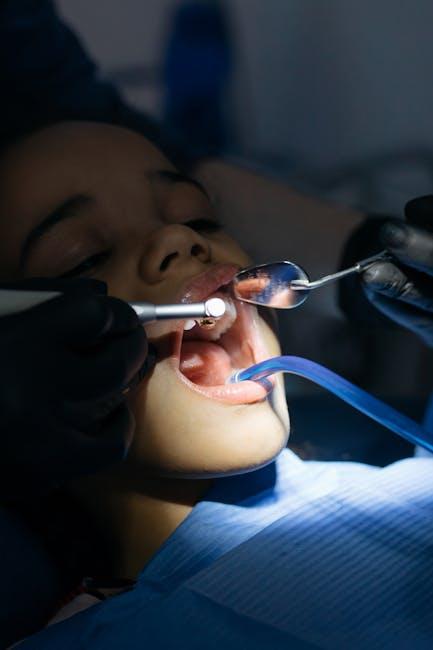
1 in 3 Kids Has Dental Problems, Poll Finds – U.S. News & World Report
Dental health is a crucial aspect of children’s overall well-being, yet a recent poll reported by U.S. News & World Report reveals a startling fact: 1 in 3 kids in the United States suffers from dental problems. This comprehensive article dives deep into the causes, consequences, and practical solutions for this widespread issue, providing parents, caregivers, and health professionals valuable insights to promote better oral health among children.
Understanding the Scope of Children’s Dental Problems
According to the latest survey data, an alarming number of children experience dental problems such as cavities, tooth decay, gum disease, and other related issues. These conditions not only cause pain and discomfort but can also impact a child’s nutrition, speech development, and academic performance.
Here are some common dental problems affecting children:
- Dental Caries (Tooth Decay): The most frequent chronic childhood disease.
- Gum Disease: Often overlooked but can develop early if oral hygiene is neglected.
- Tooth Sensitivity: Due to enamel erosion or early decay.
- Malocclusion: Misalignment that may require orthodontic intervention.
Why Are So Many Children Facing Dental Issues?
The poll findings point to several contributing factors behind the high prevalence of dental problems among children:
- Poor Oral Hygiene Habits: Irregular brushing, skipping flossing, and lack of routine dental visits.
- High Sugar Intake: Frequent consumption of sugary snacks, candies, and sodas exacerbates tooth decay.
- Limited Access to Dental Care: Socioeconomic disparities prevent many families from seeking timely dental treatment.
- Lack of Parental Awareness: Some parents underestimate the importance of early dental health care.
- Environmental Factors: Fluoride deficiency in water and other environmental influences.
Impact of Dental Problems on Children’s Lives
Dental issues can have far-reaching effects beyond just oral discomfort:
- Physical Pain: Causes difficulty eating and sleeping.
- Nutritional Deficiencies: Avoiding healthy foods due to dental pain.
- Low Self-esteem: Children may feel embarrassed about damaged or missing teeth.
- Missed School Days: Due to dental pain or treatment appointments.
- Long-term Health Risks: Untreated decay can lead to infections affecting overall health.
Statistics on Children’s Dental Health in the U.S.
| Dental Issue | Percentage of Kids Affected |
|---|---|
| Dental Cavities | 33% |
| Untreated Tooth Decay | 20% |
| Gingivitis | 10% |
| Orthodontic Needs | 15% |
Practical Tips for Improving Children’s Oral Health
Parents and caregivers can take proactive steps to reduce the risk of dental problems in children:
- Establish a Daily Oral Hygiene Routine: Brush children’s teeth twice a day with fluoride toothpaste and floss daily.
- Regular Dental Checkups: Schedule dental visits every six months or as recommended.
- Limit Sugary Foods and Drinks: Encourage healthy snacks like fruits and vegetables.
- Use Fluoride Products: Employ fluoride rinses or varnishes as advised by a dentist.
- Educate Children: Teach kids the importance of oral health and demonstrate proper brushing techniques.
- Address Dental Anxiety: Create a positive dental experience to build children’s comfort with dental visits.
Case Study: Successful Oral Health Improvement Program
One community health initiative in California focused on reducing childhood tooth decay by combining education, fluoride treatments, and mobile dental clinics. Within two years, the program led to:
- 25% reduction in untreated cavities among participating children
- Increased awareness among parents about daily oral hygiene
- Improved access to dental care for underserved families
This case highlights the importance of community-based efforts and education in combating pediatric dental problems.
Benefits of Maintaining Good Oral Health in Kids
Healthy teeth and gums offer numerous benefits for children, including:
- Improved ability to chew and digest food properly
- Prevention of painful dental diseases and infections
- Better speech development and pronunciation
- Boosted self-confidence and social interactions
- Lower healthcare costs due to fewer emergency treatments
First-Hand Experience: A Parent’s Story
Jessica, mother of two children aged 5 and 8, shares her journey:
“I didn’t pay much attention to my kids’ dental health at first. I assumed baby teeth didn’t matter since they fall out, but after my eldest had painful cavities, I realized the importance of early prevention. Now, we have a strict brushing routine and visit the dentist regularly. My children’s smiles have never been brighter!”
Conclusion: Taking Action to Protect Children’s Dental Health
The poll revealing that 1 in 3 kids has dental problems should serve as a wake-up call for parents, schools, and healthcare providers alike. With many dental conditions preventable through education, proper care, and access to professional services, we can drastically improve children’s oral health nationwide. By adopting good habits early on, prioritizing routine dental visits, and fostering supportive environments, we ensure our children grow up with healthy, confident smiles.


